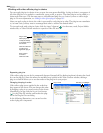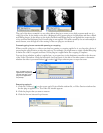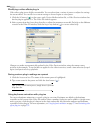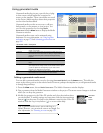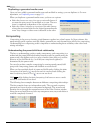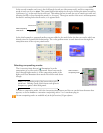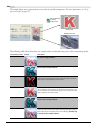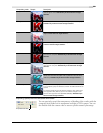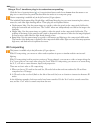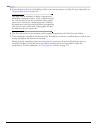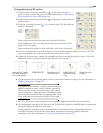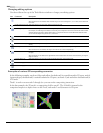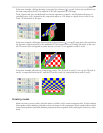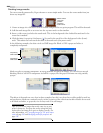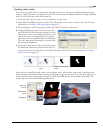
252
USING VIDEO FX, COMPOSITING, AND MASKS CHP. 14
Using a 2-to-1 transform plug-in to customize compositing
Click the Parent Composite Mode ( ) or Composite Mode button and choose Custom from the menu to use
plug-ins to control how the parent track modifies the tracks in its composite group.
Custom compositing is available only in the full version of Vegas software.
The included Displacement Map, Height Map, and Bump Map plug-ins can create interesting lens, mirror,
water, fire, and other light-bending effects. These plug-ins are explained below:
• Displacement Map: Uses the parent image as a guide to offset the pixels in the composited child tracks
along the horizontal and vertical axes. The X and Y offsets are independently encoded in the image color
channels.
• Height Map: Uses the parent image as a guide to offset the pixels in the composited child tracks. The
gradient of the image in the parent track is used to determine the amount of offset for the image displayed
at that location, much like how light bends through a lens.
• Bump Map: Uses the parent image as a guide to add texture and lighting to the composited child tracks.
The texture of the bump map is applied to the composited child tracks: light sections of the map represent
high areas, and dark sections represent low areas.
3D Compositing
This feature is available only in the full version of Vegas software.
With 3D compositing, you can move video tracks anywhere in space to simulate realistic motion and
lighting.
With 2D compositing (and in previous versions of Vegas software), you can move video or images along the
X or Y axes, and you can rotate video along the Z axis. With 3D compositing, you can move or rotate along
the X, Y, or Z axes to create distance, depth, and perspective.
There are two basic rules to 3D compositing:
1.
When you have a 2D track in the track list, 3D tracks below that track are rendered in 3D and then
composited as a 2D image.
2.
A 2D track at the root level (flush to the left of the track list) acts as a barrier to interaction between 3D
tracks.
In the following examples, both text tracks have been rotated in 3D: the “hot” track is rotated toward the
user, and the “cool” track is rotated away from the user.



